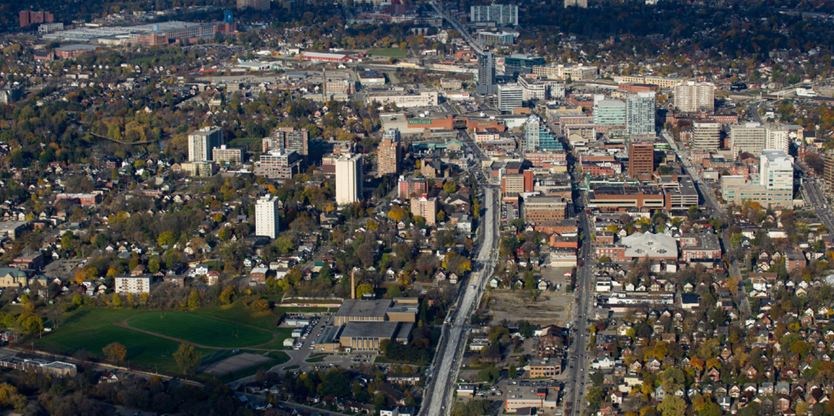Much of the new development planned along the LRT route is mixed-use, blending residential development with shops, offices and other businesses in a pedestrian-friendly mix.
But a new study out of the University of Waterloo suggests this type of development has a serious downside: It may be too pricey for many of us.
The study was published in January in the Journal of the American Planning Association.
It looked at mixed-use neighbourhoods in Toronto between 1991 and 2006 and found that housing in mixed-use zones was the least affordable, compared to housing in other parts of the city and in the larger Toronto area.
That lack of affordability hit some occupations more:
Those working in tech, banking and other high-paying service jobs were actually more able to afford the mixed-use housing. But people in lower-paying jobs such as sales and services or manufacturing either moved away from mixed-use areas, or ended up paying a higher percentage of their income on housing.
“That leads to inequality in the city, and segregation,” said Tara Vinodrai, a geography professor at the University of Waterloo and one of the authors of the study.
“You push lower-income occupations out of those neighbourhoods.”
While the housing market in Waterloo Region is different than Toronto’s, the study has some relevance, since much of the new development going up along the LRT corridor in Waterloo Region is mixed-use, said Markus Moos, a planning professor at UW who also worked on the study.
Mixed-use neighbourhoods exemplify “smart growth” that offers many benefits: More intense housing, near shops and jobs, has many benefits. It reduces sprawl, it promotes walking, transit and cycling over car use, and it helps create lively, diverse neighbourhoods.
But without deliberate policies to encourage affordable housing, these desirable new developments could be the exclusive enclave of the better-off, Moos said.
But since these developments are just starting along the LRT line, there’s still plenty of time to have policies in place to ensure affordability is a key consideration, they say.
“It’s a cautionary tale,” said Vinodrai. “We’re not rejecting the idea of mixed use, (but) if you don’t pay attention, this could be one of the outcomes that is unintended. It’s worth keeping an eye on.”
The LRT is public infrastructure that’s publicly funded, and it’s important that it be accessible not only to well-off areas, Vinodrai said.
Municipalities have a few tools to encourage affordability. The province has just changed planning rules to allow “inclusionary zoning,” where a municipality can require a percentage of units in a new development be affordable. Municipalities can also use density bonusing, where a developer can build more units than normally permitted, in exchange for providing things like affordable housing, public art or a public space such as a fountain or square.
Affordable housing came up again and again as a concern as Kitchener planners worked on the city’s plans around rapid transit stops, known as PARTS, said city planner Tina Malone-Wright. “We’re doing what we can within our powers, but they’re limited,” she said.
For example, the Central PARTS study, approved by council, would allow bonusing for affordable housing in mixed-use areas, she said.
As well, last July Kitchener decided to waive building permit and application fees for affordable housing anywhere in the city.
But such policies are an incentive, and don’t compel a developer to include affordable housing. The inclusionary zoning is a stronger tool that mandates a certain amount of affordable hosing, but municipalities are still waiting for the province to spell out the regulations.
Coun. Frank Etherington, who pushed for the fee exemptions for affordable housing, said affordable housing is crucial for a healthy city.
“What better place to have housing that people can afford than along the LRT? People who don’t necessarily have vehicles are the ones most in need of access to public transit.”
But he says he’s seen “precious little” interest on the part of developers, which is why he wants to see tougher requirements like inclusionary zoning. The huge 27-acre Schneider lands would be an ideal place for true mixed-use, with a variety of housing ranges at different prices, he says.
“I would love to see that happening,” he said. “But it’s so slow.”

